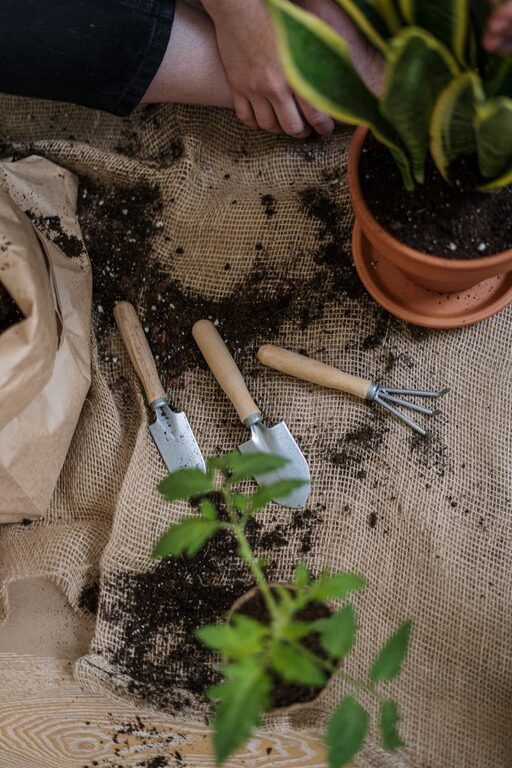
How to Start a Small Herb Garden Indoors: A Beginner’s Guide
Starting a small herb garden indoors is a rewarding way to bring fresh flavors to your cooking, improve air quality, and add a touch of greenery to your living space. Whether you have a sunny windowsill or limited space, growing herbs indoors is both practical and enjoyable. This guide will walk you through the essentials of setting up your own indoor herb garden, perfect for beginners.
Why Grow Herbs Indoors?
Growing herbs indoors offers many benefits:
– Freshness: Pick herbs straight from your garden any time you need them.
– Convenience: No need to step outside; everything is at arm’s reach.
– Control: You can manage light, water, and temperature conditions easily.
– Aesthetics: Herbs add a charming, natural touch to your home decor.
– Year-round growth: Grow herbs regardless of the season or weather.
Choosing the Right Herbs for Indoor Gardening
Not all herbs thrive indoors, so it’s best to start with varieties that adapt well to indoor conditions:
– Basil: Loves warmth and bright light.
– Parsley: Prefers moderate light and regular watering.
– Mint: Thrives with indirect light and moist soil.
– Chives: Easy to grow with moderate sunlight.
– Thyme: Needs bright light and well-drained soil.
– Oregano: Tolerates less frequent watering and bright light.
– Cilantro: Likes cooler spots with indirect sunlight.
Start with two or three herbs that you use frequently to avoid overwhelming your space or care routine.
Selecting Containers and Soil
Containers
Choose containers that have drainage holes to prevent waterlogging, which can damage roots. Sizes can vary based on the herb type:
– Small pots (4-6 inches) are suitable for herbs like chives and mint.
– Deeper pots are better for herbs that grow larger root systems, such as basil and parsley.
You can use traditional pots, recycled containers, or stylish planters that match your decor.
Soil
Use a high-quality potting mix designed for indoor plants, which offers good drainage and aeration. Avoid garden soil, as it can be too dense and may contain pests or diseases.
Lighting Needs for Indoor Herbs
Adequate lighting is crucial because herbs require about 6-8 hours of sunlight daily.
– South-facing windows provide the most consistent light.
– If natural light is limited, consider using a grow light with full spectrum LED bulbs, which can mimic sunlight.
– Rotate your plants regularly to ensure even light exposure.
Planting Your Herbs
You can start your indoor herb garden from seeds or purchase young plants from a nursery.
From seeds:
– Fill the container with potting mix, leaving about an inch at the top.
– Sprinkle seeds thinly and cover lightly with soil.
– Water gently until moist but not soaked.
– Cover with plastic wrap to retain humidity until seeds sprout.
– Once seedlings appear, remove the plastic and place in a bright spot.
From nursery plants:
– Gently remove the plant from its nursery pot.
– Loosen roots if they are compacted.
– Plant in your container and fill with potting mix around the roots.
– Water thoroughly.
Watering and Maintenance
– Water when the top inch of soil feels dry. Overwatering can cause root rot.
– Use a spray bottle for gentle watering or water from the bottom by placing pots in a tray of water for 15 minutes.
– Regularly prune herbs to encourage bushy, healthy growth.
– Remove any yellow or dead leaves.
– Fertilize every 4-6 weeks with a balanced liquid fertilizer diluted to half strength.
Troubleshooting Common Issues
– Leggy growth: Usually due to insufficient light; move plants to a brighter location or supplement with grow lights.
– Wilting: Could be from underwatering or overwatering; check soil moisture.
– Pests such as aphids or spider mites: Wipe leaves with a mild soap solution or use natural pest control like neem oil.
– Fungal diseases: Ensure good air circulation and avoid wetting leaves excessively.
Harvesting Your Indoor Herbs
Harvest herbs regularly to encourage new growth:
– Snip leaves or stems using scissors or your fingers, cutting just above a leaf node.
– Avoid removing more than one-third of the plant at a time.
– Harvest in the morning for peak flavor.
Tips for Success
– Start small and gradually expand your herb garden.
– Group plants with similar light and watering needs together.
– Keep a watering schedule or set reminders.
– Experiment with different herbs to find your favorites.
– Enjoy the sensory benefits: smell, taste, and touch your herbs daily.
Starting an indoor herb garden is an accessible and enjoyable project that enhances your home and culinary experiences. With the right care and environment, your herb garden will flourish and provide fresh, flavorful ingredients for your kitchen all year round. Happy gardening!
